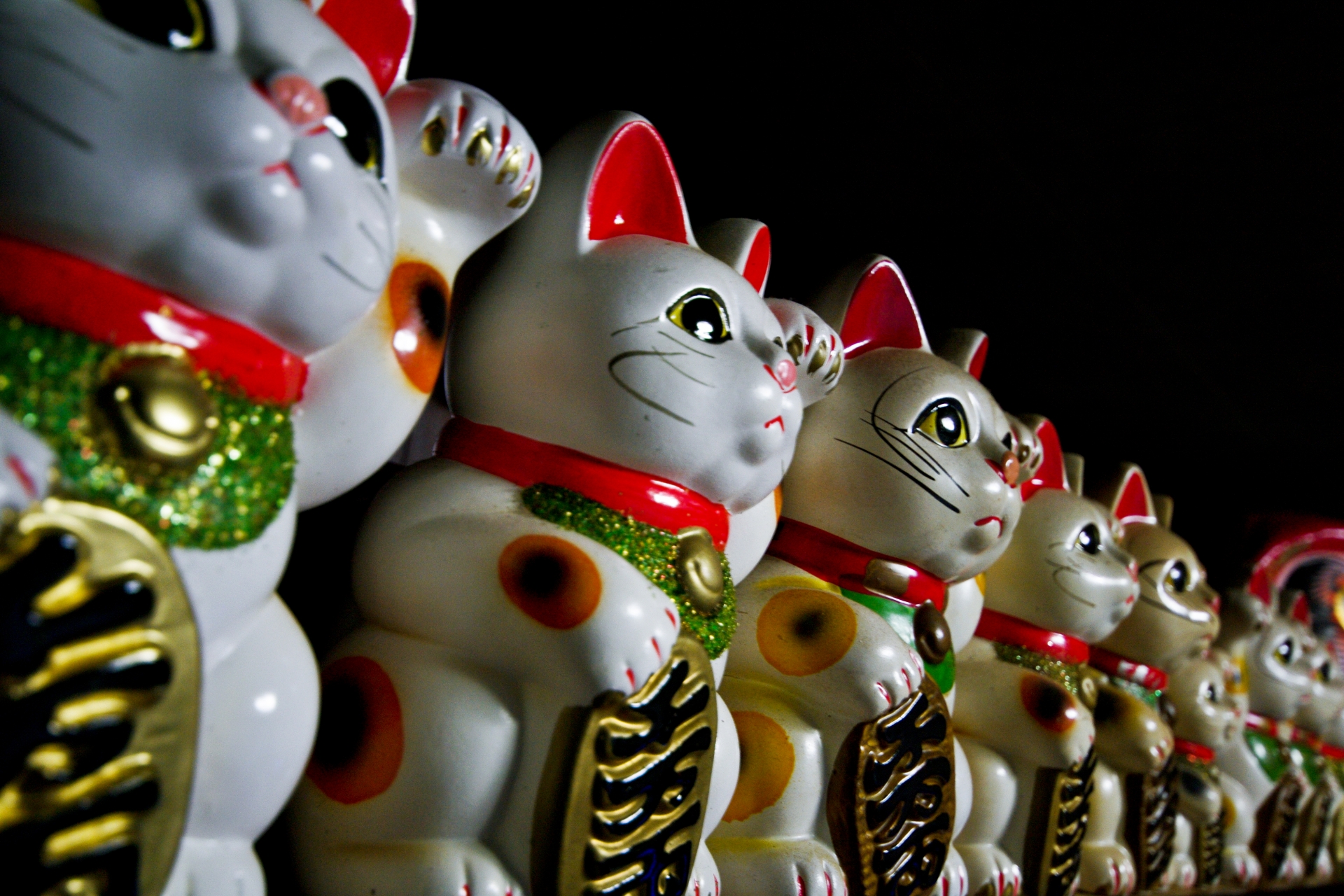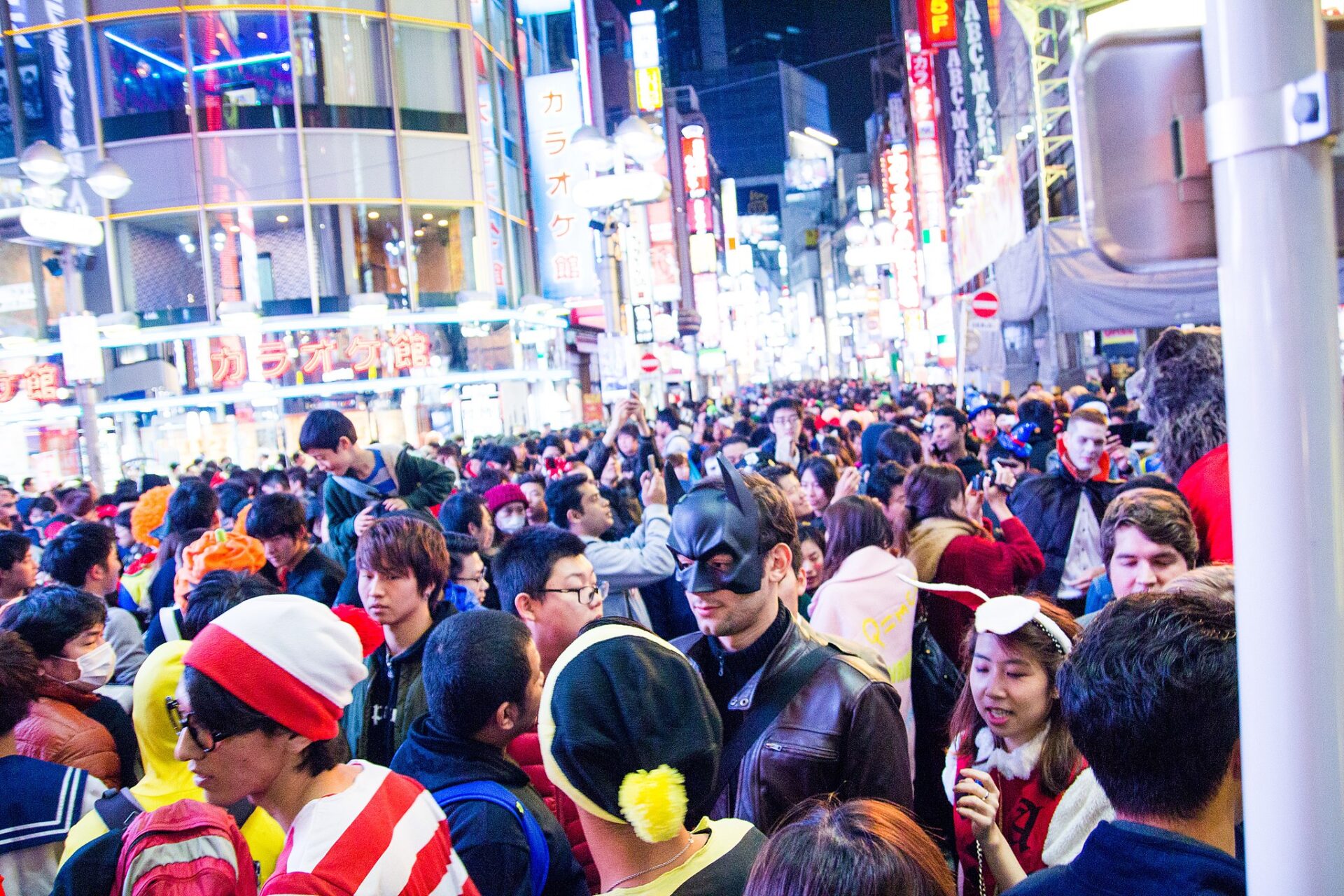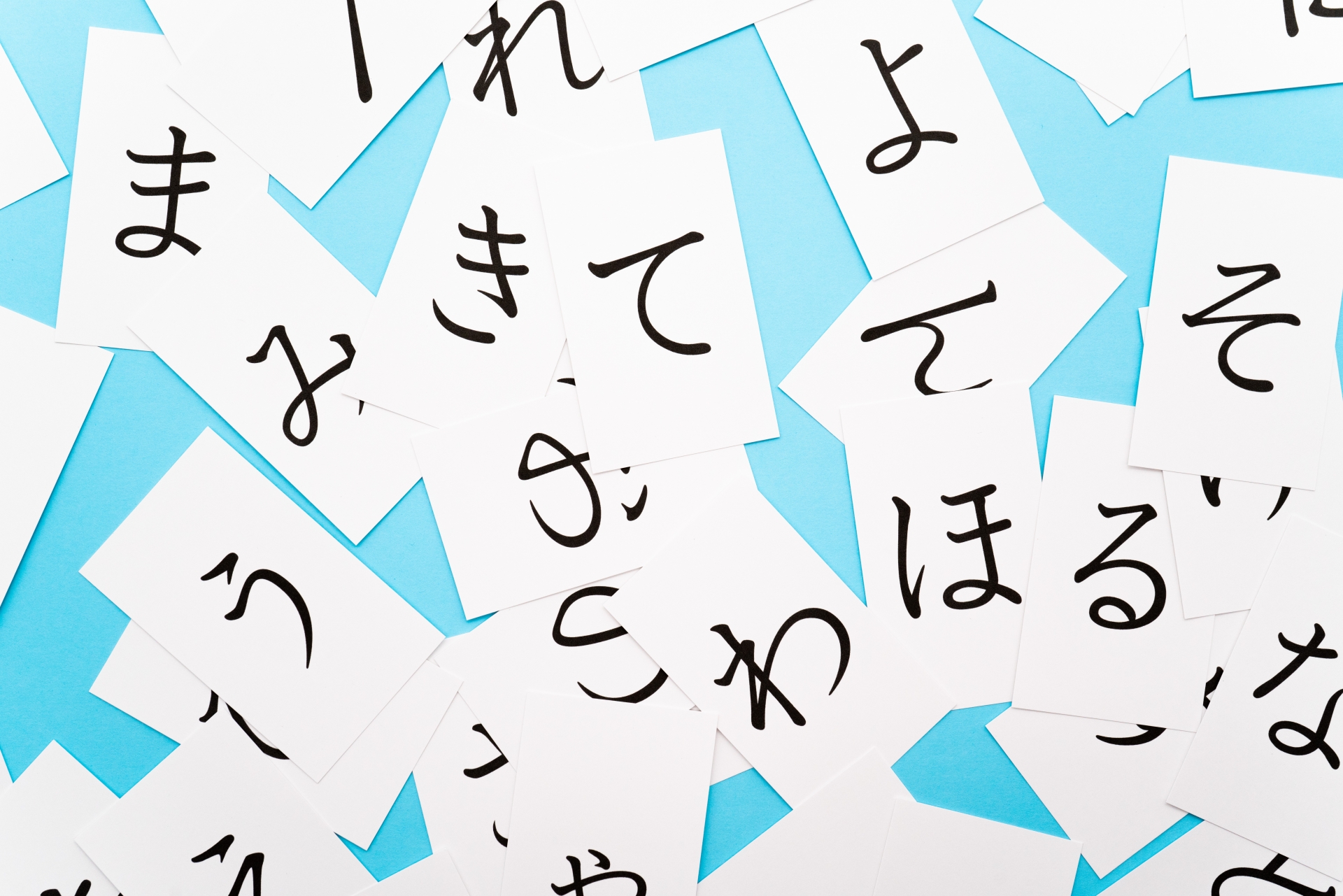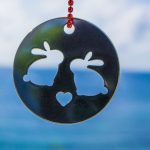
Miho Shimizu is a Japanese freelance writer settled in Shizuoka with her husband and two rabbits. Fascinated with traveling at the age of 18, she has spent most of her long holidays exploring incredible spots around Japan. She also loves to listen to music, draw, and read novels over a cup of green tea.
This post may contain some affiliate links. When you click through and make a purchase we may receive some commission, at no extra cost to you.
Japan boasts a wide variety of auspicious symbols which are considered to bring good luck and fortune to the owner. Some of them are perfect as memorable souvenirs to take home, while other have unique history and origins that are worth learning.
Whether you believe in their special powers or not, learning about them could be an interesting way to help you deepen your understanding of Japan and its culture. Here are the 10 symbols of luck and good fortune that you can find in Japan!
1. Maneki neko
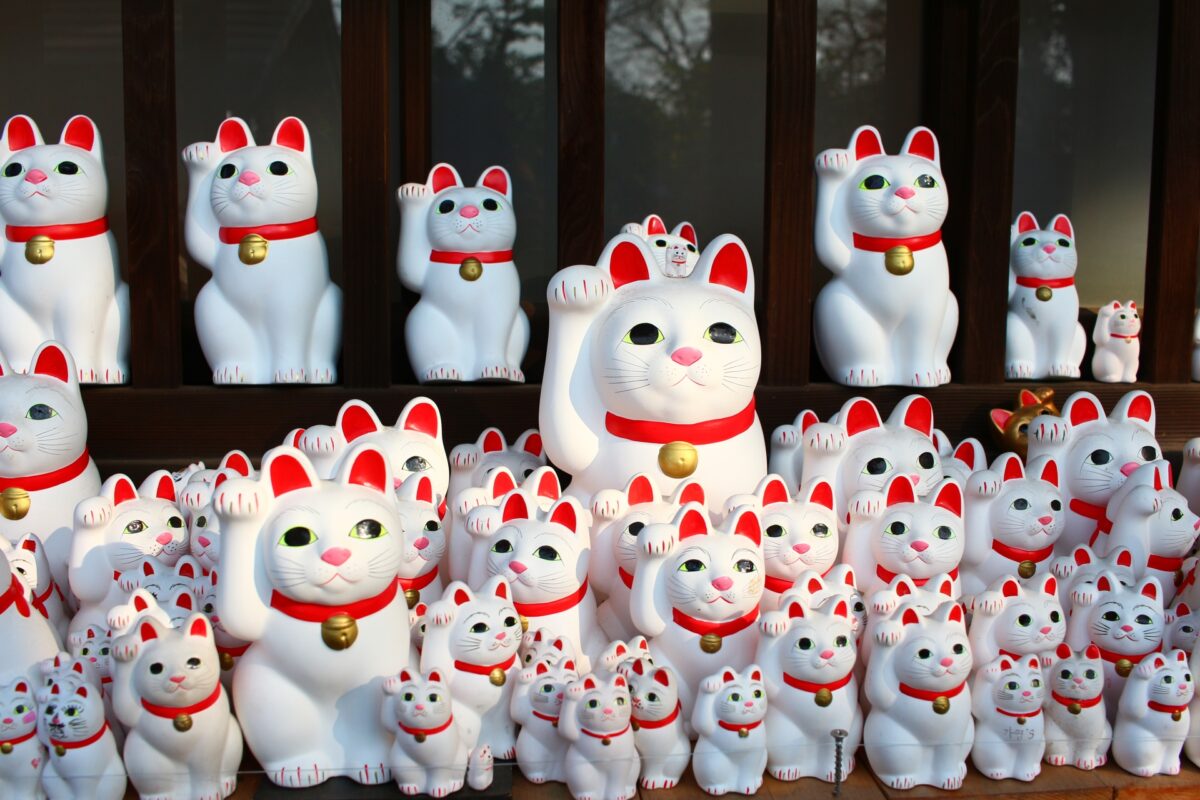
Maneki neko is an adorable ceramic statue of a beckoning cat which is a symbol of good fortune in Japan. Maneki means “beckoning” or “welcoming”, and Neko means “cat” in Japanese.
They are often found at shops, stores, and restaurants around Japan since they are believed to bring good luck in business. Traditionally, Maneki neko has two different meanings depending on which hand is raised up.
Maneki neko which raises its left hand is said to attract more customers, while Maneki neko waving its right hand is considered to bring good luck and a successful business.
You may also come across Maneki neko holding a gold coin in their empty paw. It is called “Koban” (小判), which is an old Japanese coin used in the Edo period (1608 – 1868). You can also find them at souvenir shops in popular tourist destinations, which are perfect to take home as a memorable gift.
2. Omamori
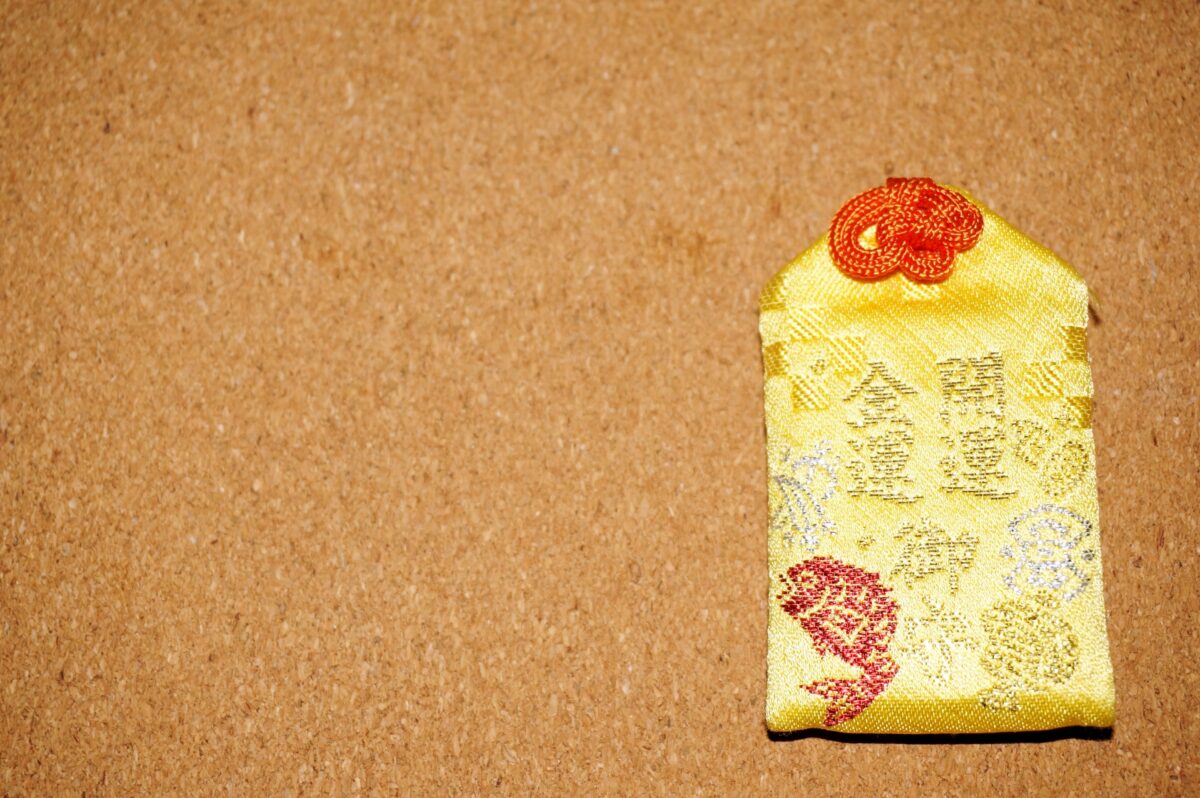
Omamori is a small good luck charm that is typically sold at temples and shrines in Japan. “Mamori” means “to protect something”, and Omamori is believed to bring good luck and protect the owner from troubles and misfortune in life. There are several types of Omamori for different purposes, and you can buy one which suits your wish best.
Japanese people buy Omamori wishing for good health, good luck in academic performance, traffic safety, success in business, and safe delivery of a child. If you know someone back in your country who has these wishes, Omamori is a perfect gift for them! These wishes are written in Kanji characters on Omamori. Omamori is small, and can easily be tied to bags or wallets with a string. This means you can carry around the power of protection with you wherever you go!
3. Omikuji
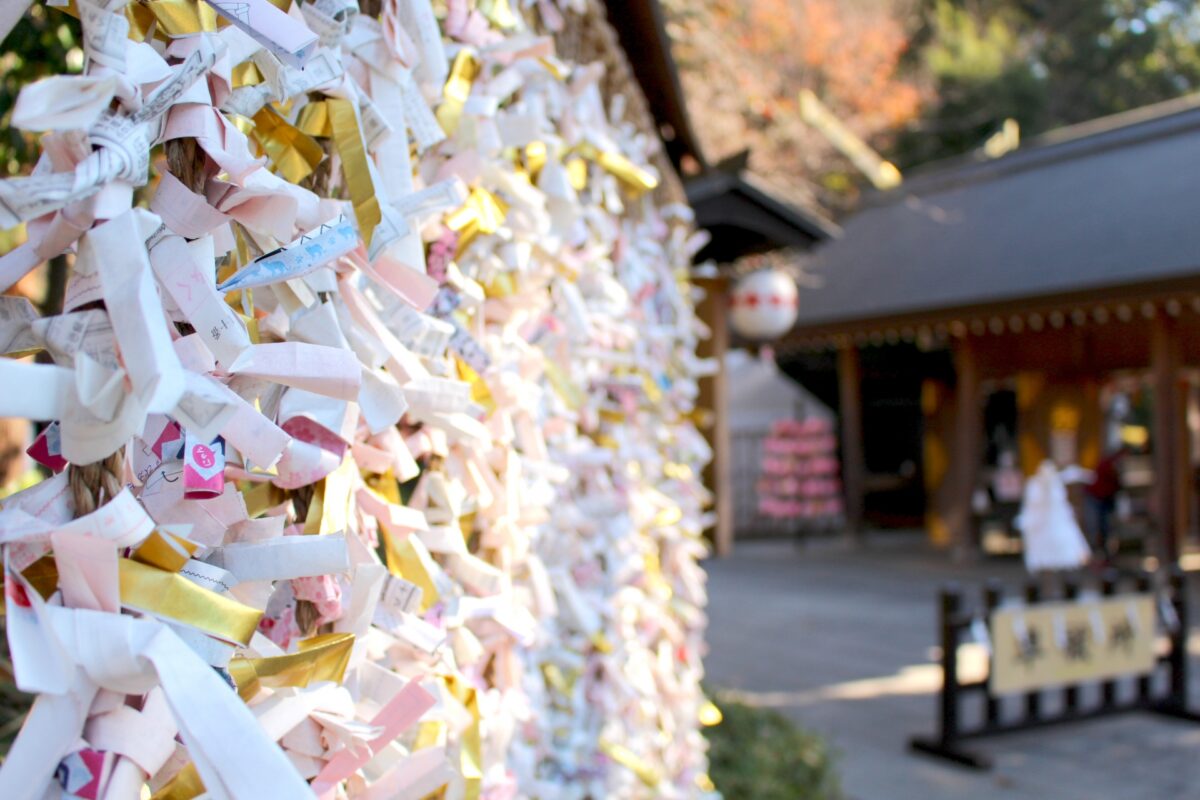
Along with Omamori, Omikuji is widely found at Japan’s temples and shrines. It is a paper slip that tells the fortune and prediction for your future. Many Japanese people draw Omikuji when visiting temples or shrines, hoping to get some helpful advice for their lives from it.
It generally costs around 100 – 300 yen to buy Omikuji, and you will get a random result written on a small paper regarding your fortune for love, success in business, good luck in exams, heath, and so on.
The best result of Omikuji is “Dai-kichi” (大吉), which indicates an excellent fortune in your future. If you unfortunately get the worst result, which is called “Dai-kyo” (大凶), don’t take it home, and tie your Omikuji to the designated place called “Musubijo” (結び所), which is found at the temple or shrine grounds!
Check out our article below to learn more about Omikuji!
What is Omikuji? : Complete Guide to Japanese Fortune Slip
4. Koinobori/Koi
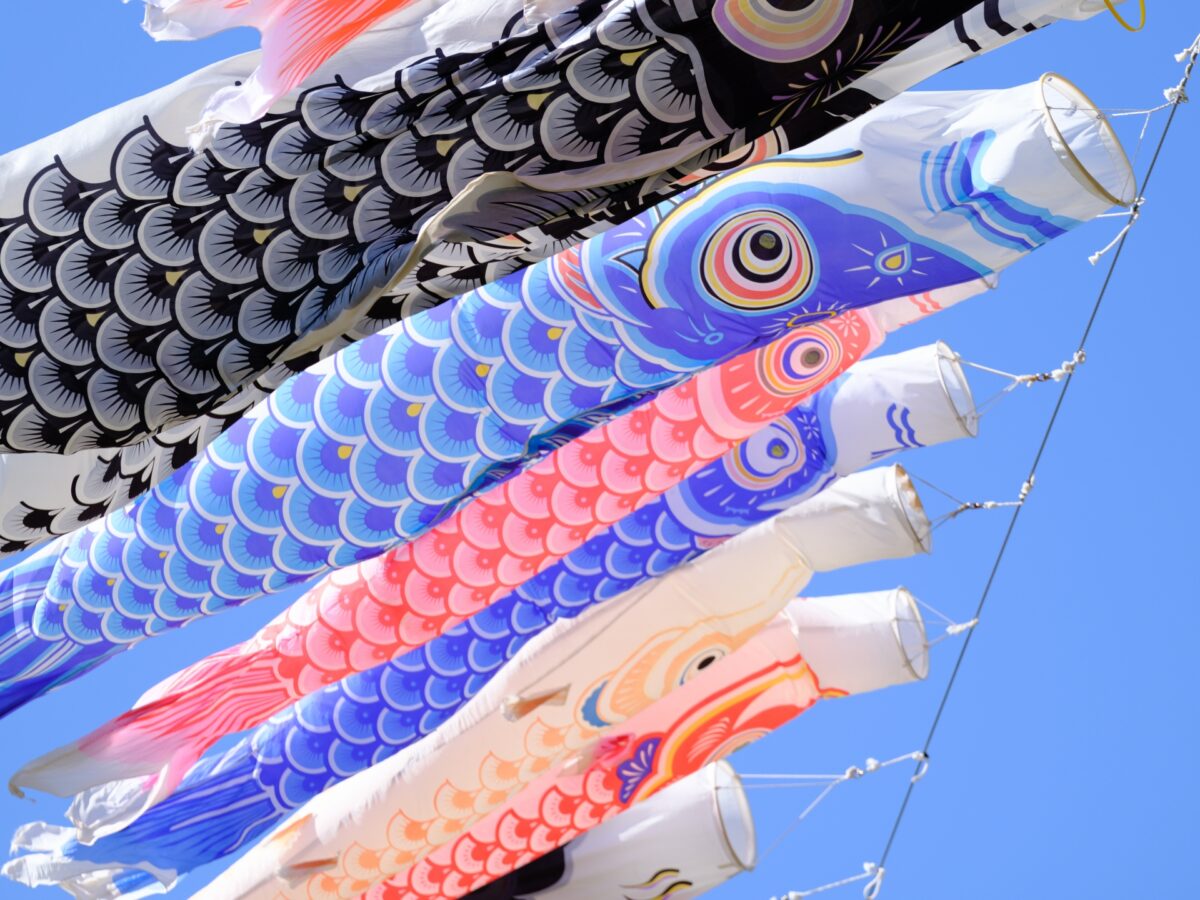
Koinobori is Japanese carp streamers that are traditionally displayed at houses on May 5th, one of Japan’s annual national holidays known as “Kodomo-no hi” (Children’s Day). Japanese carp has been considered an auspicious symbol that is associated with good luck, prosperity, longevity, and success in life.
The history of Koinobori dates back to as early as the Edo Period (1603 – 1868) when people of the Samurai class started to put up the carp-shaped display outside their houses. Koinobori symbolizes hopes for children’s healthy growth, and reflects parent’s wishes for their children to be brave, strong, and overcome difficulties in their lives like the giant carp streamers strongly flying in the wind.
5. Cranes/Senbazuru
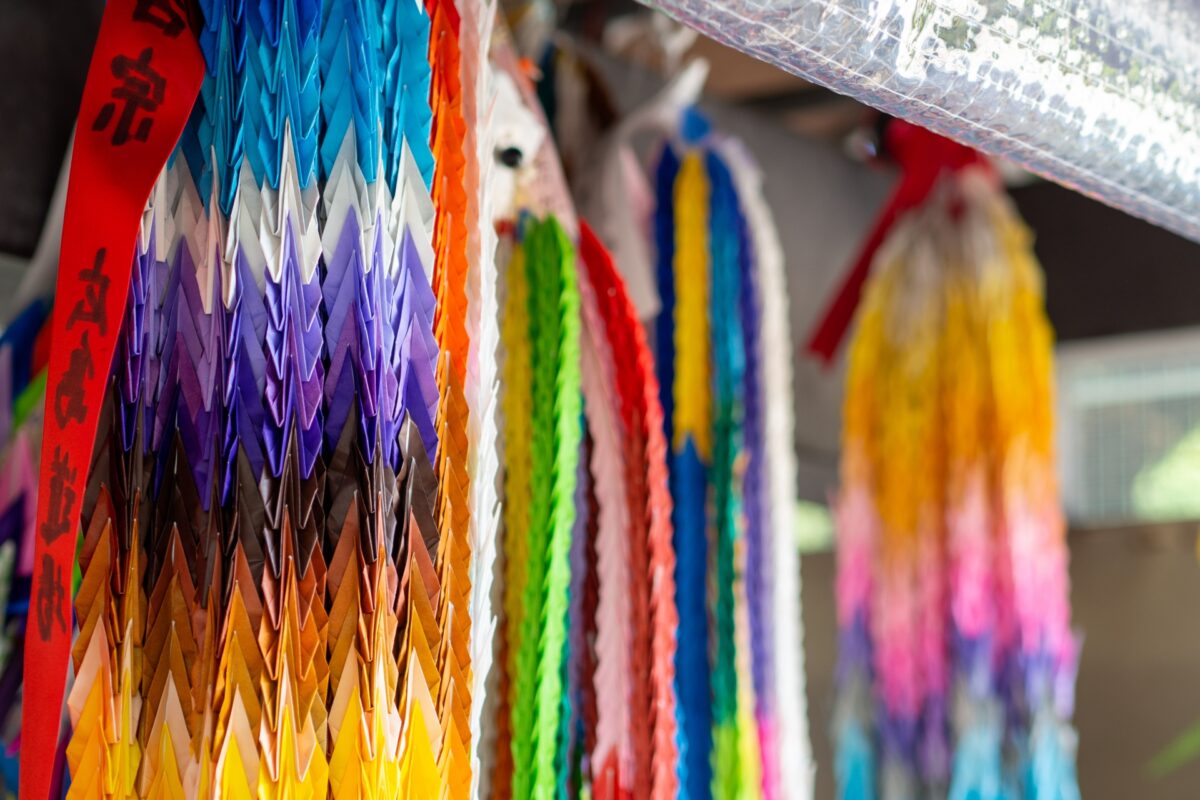
Since ancient times, cranes have been regarded as a symbol of good luck and longevity in Japan. Along with turtles, they are often used for special occasions and celebrations. You might have seen beautiful crane designs appearing on traditional Kimono for weddings or coming-of-age ceremony for new adults.
▶You can explore the city with a kimono with Kimono Rental wargo located in popular tourist spots in Tokyo, Kyoto, Osaka, and other areas!
Senbazuru (千羽鶴) literally means a thousand cranes which are made of traditional Japanese papers called “Origami”. Origami They are often given as a thoughtful gift to people suffering from illness in the hospital. This is a great way to express your hope for their quick recovery.
6. Ema
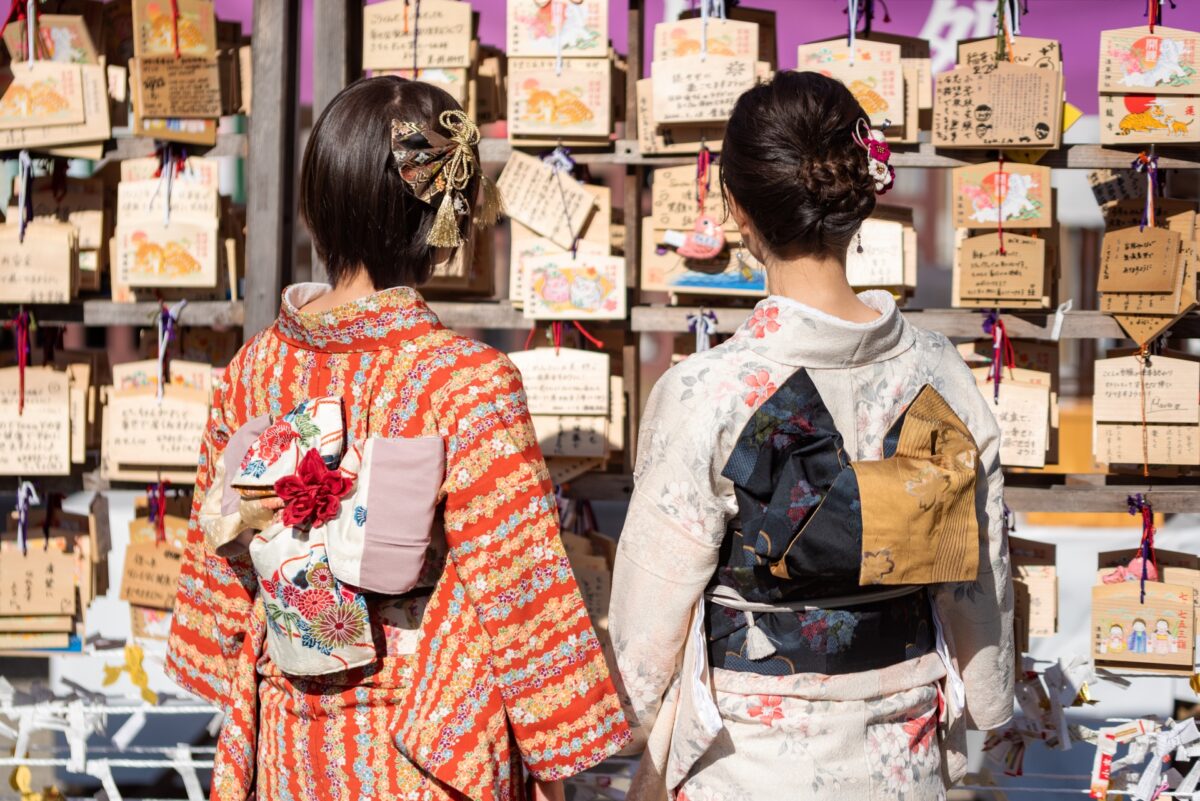
Ema is a small wooden plaque that is sold at temples and shrines across Japan. Traditionally, Japanese people write their wishes, New Year’s resolutions, or hopes for the future on Ema, and dedicate them to shrines or temples where the god will receive them and make their wishes come true.
On the front side of Ema, you will often find symbols of good luck, including horses, carp, Daruma, or the Chinese zodiac animal of the year. On the other hand, the back side is left blank for people where they can write their hopes freely.
Ema comes in different shapes and sizes, and you can sometimes come across uniquely-shaped Ema. If you visit temples or shrines which are famous for matchmaking, you may get a chance to buy Ema which has the shape of heart. Fushimi Inari Shrine, one of the most popular tourist attractions in Kyoto, is particularly famous for the fox-shaped Ema!
7. Daruma
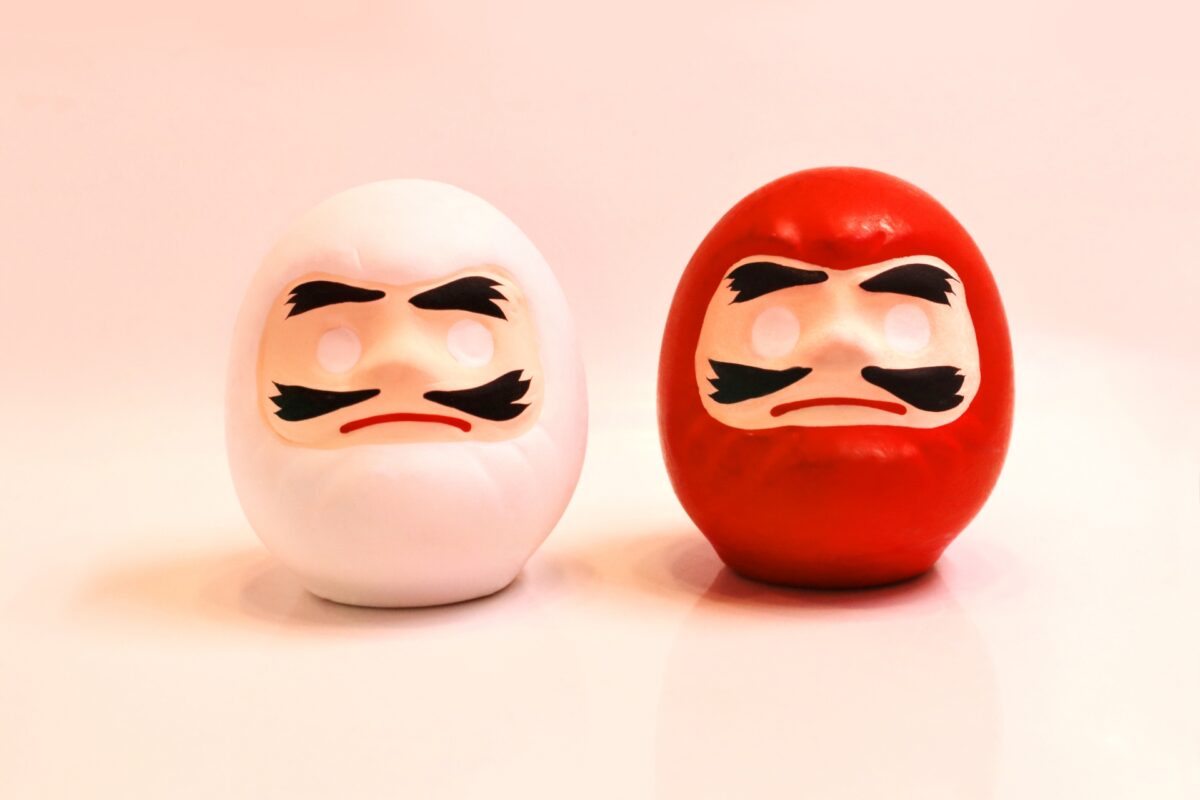
Daruma is a traditional Japanese doll is loved as a symbol of good luck and perseverance. This unique doll is designed based on Bodhidharma, an ancient Buddhist monk who lived in the 5th century. He was originally from India, and is believed to introduce the teachings of Zen Buddhism to China.
Daruma typically have a round shape, no legs or arms, and the body is painted in red. Both eyes of Daruma remain blank when you purchase them at shops, and you can draw one of them in black when you make a wish.
You need to wait until your wish comes true, and finally, complete the other unpainted eye. Thanks to the round shape, Daruma never gets knocked down, and can bounce back upright again and again. This feature of Daruma represents mental strength and perseverance which is considered significantly important in Japanese society.
8. Tanuki statues
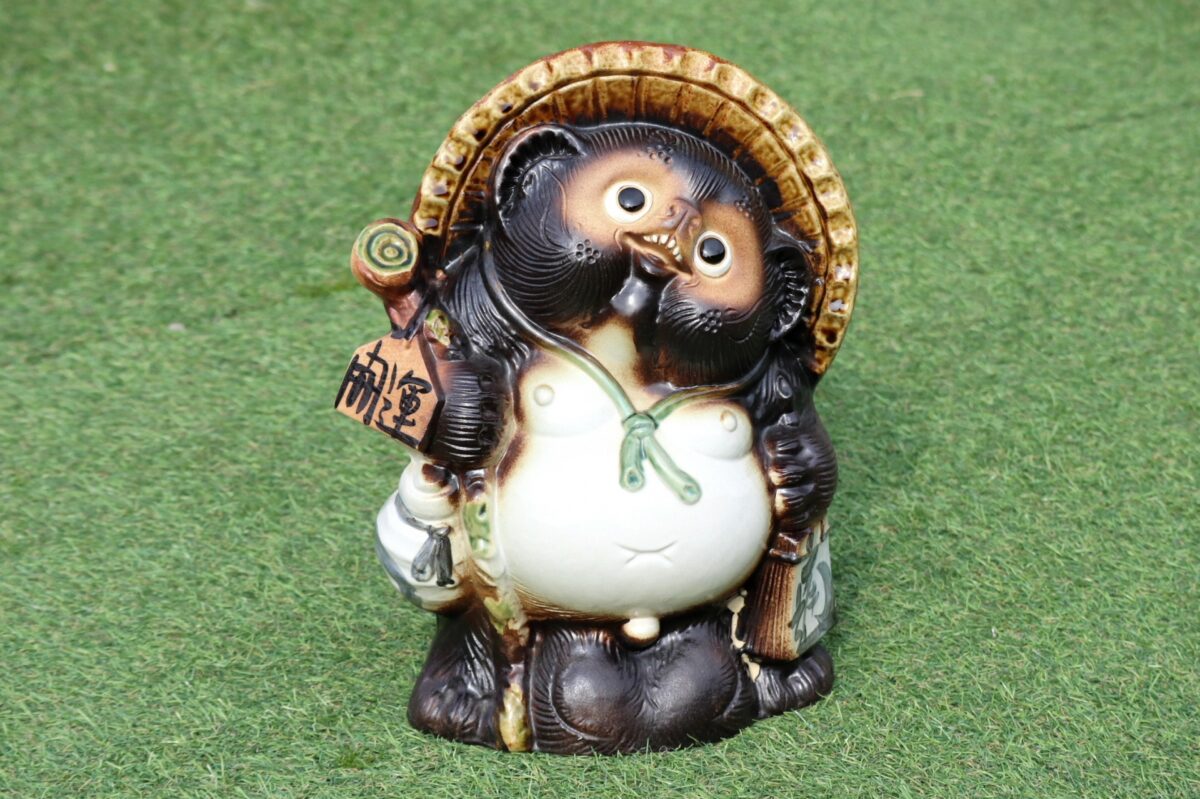
Tanuki is a type of wild animal which is native to Japan and some other countries in East Asia. It is also known as “Racoon dog” in English. As you can easily guess from the name, this adorable animal has an appearance that is quite similar to raccoons in Western countries.
In Japan, Tanuki is a symbol of good fortune, prosperity, success, and wealth. If you have ever traveled to Japan, you may have seen ceramic Tanuki statues which are placed at the entrance of shops, stores, restaurants, or Ryokan. This type of traditional pottery is called “Shigaraki-yaki” (信楽焼), one of the six oldest kilns in Japan which is produced in Shiga prefecture.
9. Kaeru
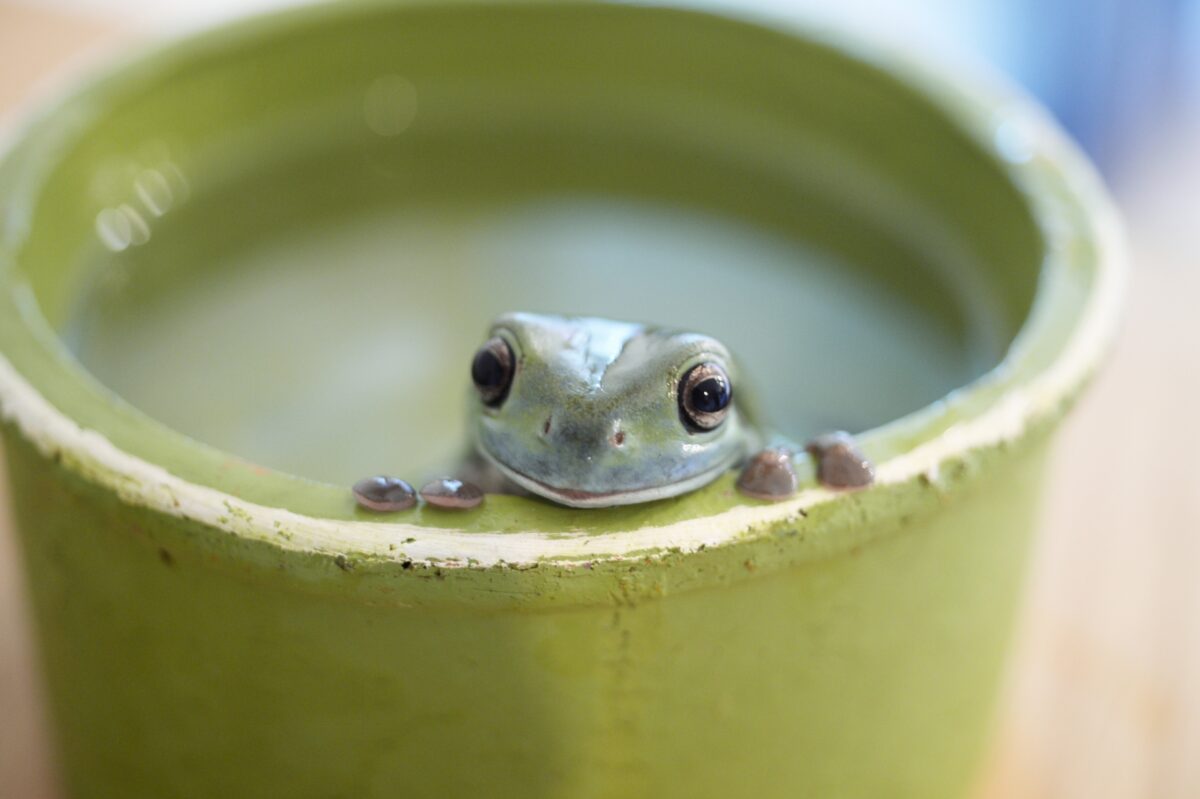
Frogs are called “Kaeru” (カエル) in Japanese, however, Kaeru has another meaning “to return”. Japanese people associate the word with good results, such as “Iki-kaeru” (come back to life), “Fukuga-kaeru” (good fortune returns), or Okane-ga- kaeru (money returns).
This well explains why frogs are loved as a symbol of good fortune in Japan. Another reason comes from one of the distinctive features of frogs. As you may have seen before, frogs jump only forward, which gives a positive and successful impression. Because of this feature, frogs are believed to bring good luck in one’s entire life, especially success in career or business.
10. Shichifukujin
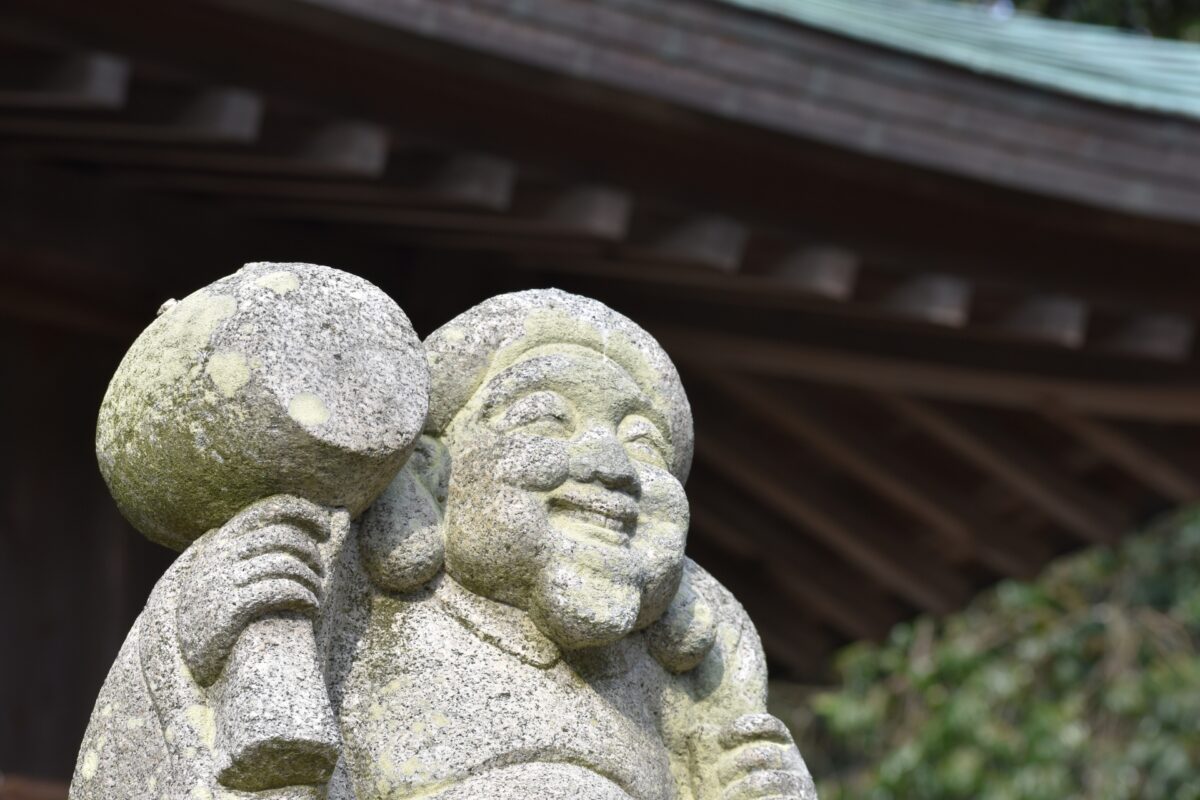
Shichifukujin (七福神) literally means a group of seven deities that are believed to bring good fortune in Japan. Each god has different religious background, including Hinduism in India, Buddhism in China, and Shintoism in Japan. Among them, Ebisu (恵比寿) is the only deity that originated in Japan. He is a God of prosperity, and wealth and is also worshiped among fishermen as a god of safe sailing.
He also appears in ancient Japanese mythology. “Shichifukujin Meguri” (七福神巡り) is a unique tradition in Japan which is typically carried out at the beginning of the new year. It is basically a pilgrimage tour to explore the Shinto shrines and Buddhist temples where the seven luck deities are enshrined.
If you are planning a trip to Japan or currently live in Japan, one of our suggestions is to visit temples or shrines where you can find Omikuji, Omamori and Ema which are offered for affordable prices. They are perfect as a first good luck experience for international tourists in Japan. Drawing Omikuji is an exciting way to try your luck, while dedicating Ema to the god could also be a memorable cultural experience, if you have a strong wish in your mind. Omamori is particularly popular these days as a souvenir, since more and more people buy them.
Explore Japan with Kimono!
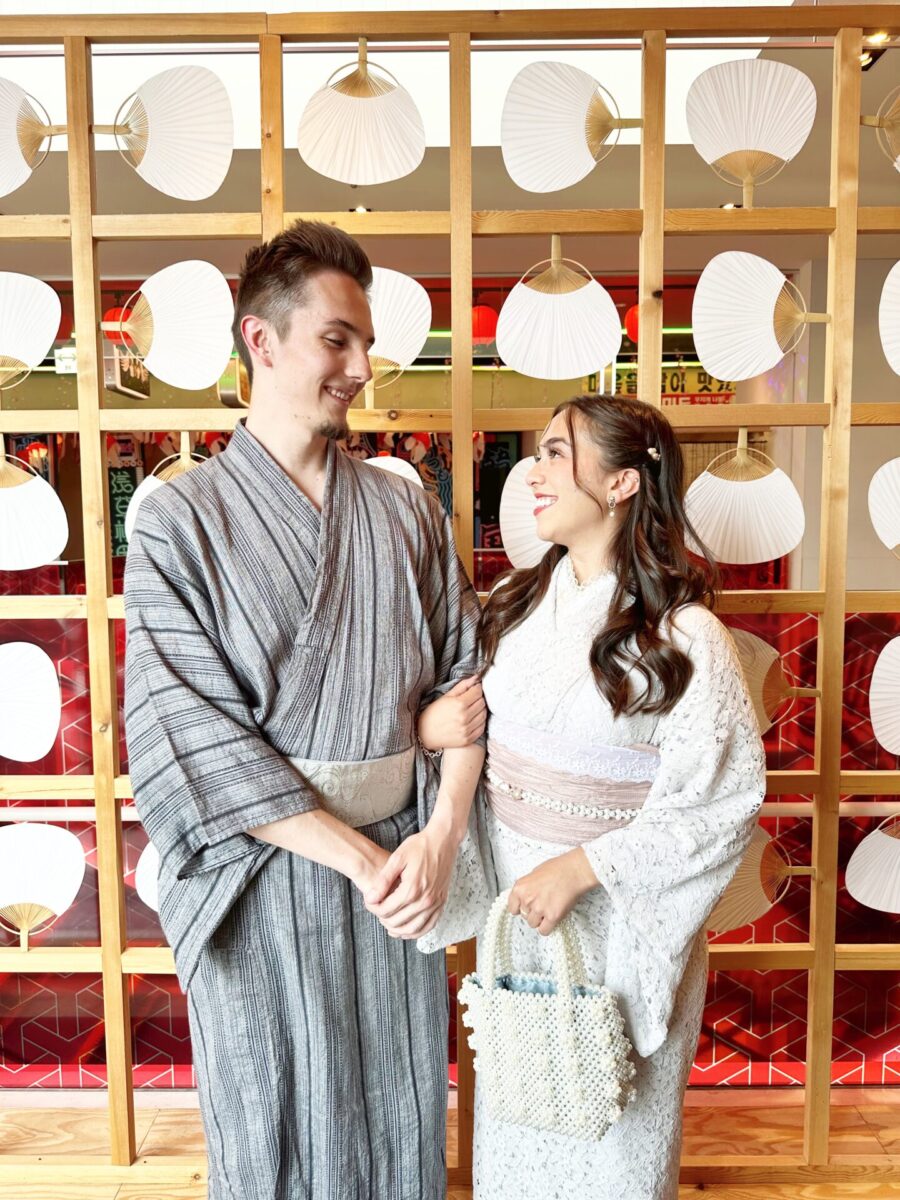
Kimono Rental is Available at Popular Tourist Attractions in Japan!
Discover Japan with a traditional Kimono from Kimono Rental Wargo! Explore cities or join festivals effortlessly starting from just ¥3,300. Our shops are conveniently located in Tokyo, Kyoto, Osaka, Kawagoe, and Kanazawa. Elevate your adventures with the elegance of the kimono and create unforgettable memories in Japan!
Japan Wonder Travel Tours
Japan Wonder Travel is a travel agency that offers guided tours throughout Japan.
From private walking tours to delicious Food and Drink tours, we can help you organize the best tours just for you! If you want to explore Japan and learn more about the history and backstories of each area you are visiting, our knowledgeable and friendly English speaking guides will happily take you to the best spots!
In addition, we can provide you with any assistance you may need for your upcoming trip to Japan, so please feel free to contact us if you have any questions or need some help!
▶Tokyo Tsukiji Fish Market Food and Drink Tour
Explore the most lively and popular fish market in Tokyo and try some of the local’s favorite street foods and sake with one of our friendly and knowledgeable English speaking guides!

▶Tokyo 1–Day Highlights Private Walking Tour (8 Hours)
There’s no better way to explore an area than taking a tour with a knowledgeable local guide. You will have the chance to learn about the history and interesting background stories of Tokyo, as well as discover some hidden gems which can be hard to do without a guide.

▶Mt. Fuji Day Trip Bus Tour from Tokyo
Experience the breathtaking views of Mt. Fuji by visiting the highlights of the area on our guided sightseeing bus tour! Departing from Shinjuku in central Tokyo, you can travel comfortably to all of the best spots in the area by bus.

▶Kyoto Private Full Day Walking Tour
On this full-day private tour of Kyoto, you will be able to see the highlights of Kyoto in just one day and at the same time develop a deeper understanding of both the culture of the area and Japan as a whole.
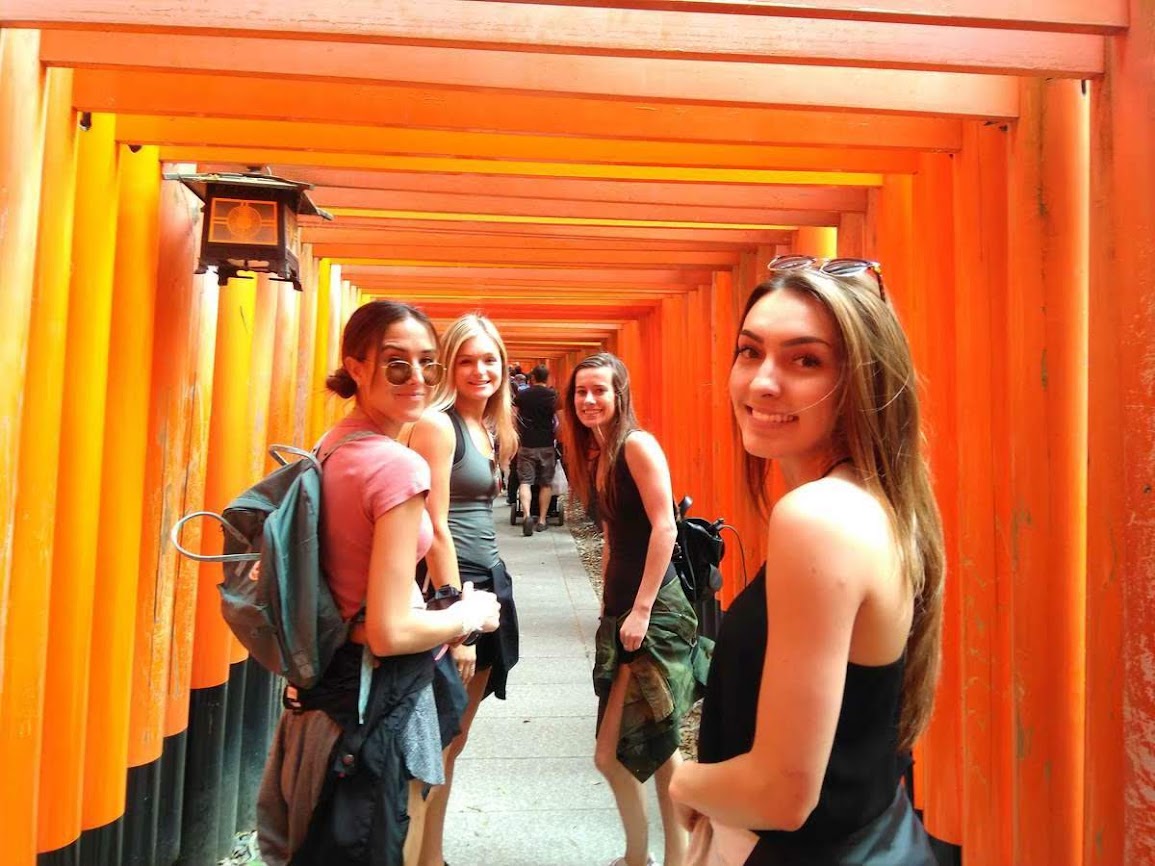
Stay informed of the best travel tips to Japan, the most exciting things to do and see, and the top experiences to have with the Japan Wonder Travel Newsletter. Every week we will introduce you to our latest content.
